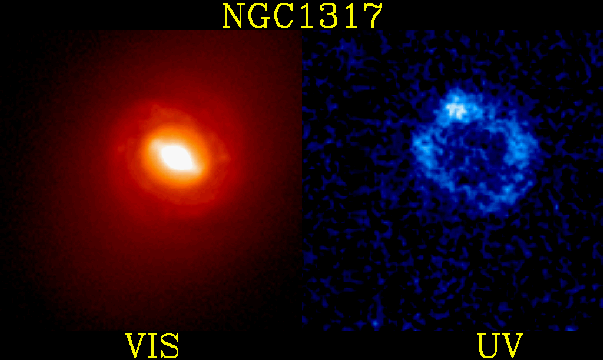Explanation: Where do stars form? A typical place is an area of dense nebular gas common to arms in spiral galaxies. Sometimes, however, a burst of star formation can occur with unusual geometry. Nearby galaxy NGC 1317 shows such an unusual ring of star formation surrounding its barred nucleus. In the above image, older stars appear more red and are more evident in the leftmost photograph in visible light. The rightmost photograph taken by the Ultraviolet Imaging Telescope is in ultraviolet and highlights stars which are younger and bluer and shows the starbirth ring. This unusual ring may be evidence of a gravitational encounter with another galaxy, causing a density wave to ripple out from the galaxy's center.
1999 2000 2001 2002 2003 2004 2005 2006 2007 2008 2009 2010 2011 2012 2013 2014 2015 2016 2017 2018 2019 2020 2021 2022 2023 2024 2025 |
Yanvar' Fevral' Mart Aprel' Mai Iyun' Iyul' Avgust Sentyabr' Oktyabr' Noyabr' Dekabr' |
NASA Web Site Statements, Warnings, and Disclaimers
NASA Official: Jay Norris. Specific rights apply.
A service of: LHEA at NASA / GSFC
& Michigan Tech. U.
|
Publikacii s klyuchevymi slovami:
starburst - zvezdoobrazovanie - spiral'naya galaktika s peremychkoi - Ul'trafioletovoe izluchenie
Publikacii so slovami: starburst - zvezdoobrazovanie - spiral'naya galaktika s peremychkoi - Ul'trafioletovoe izluchenie | |
Sm. takzhe:
Vse publikacii na tu zhe temu >> | |
